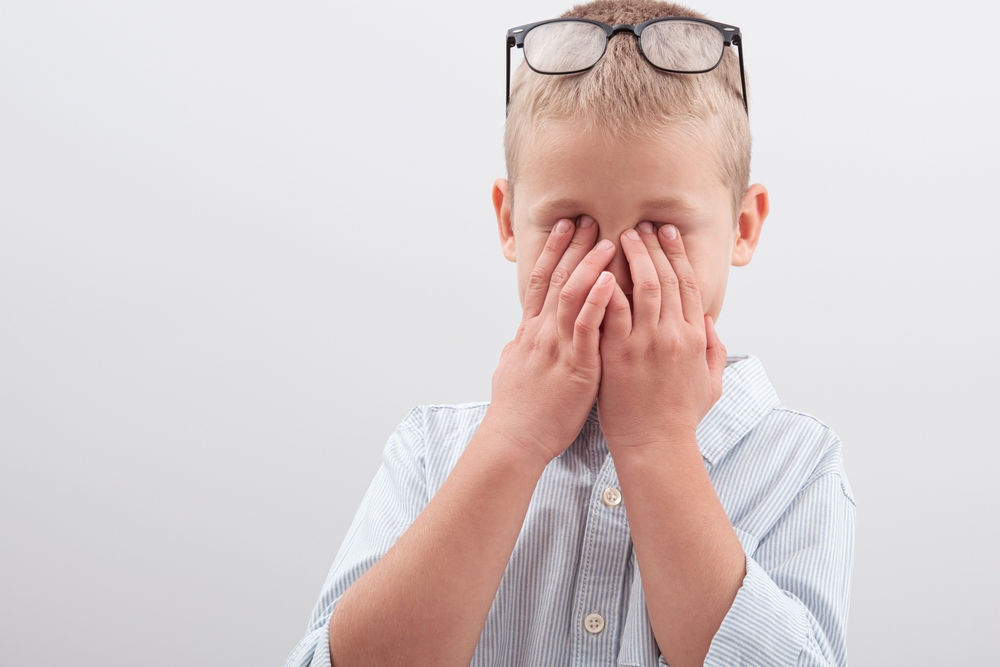
Signs Your Child Needs a Pediatric Eye Exam
At Small Wonder Eye Care, we know that early detection of eye issues is essential for your child’s visual development and overall well-being. Many eye conditions can go unnoticed, especially in young children who may not realize they have a problem. Understanding the signs that your child may need a pediatric eye exam can make a big difference in their learning, development, and quality of life.
Frequent Squinting or Blinking
Children who squint, blink excessively, or tilt their heads may be trying to improve their focus. These behaviors can indicate refractive errors, such as nearsightedness, farsightedness, or astigmatism.
Sitting Too Close to Screens or Holding Books Close to the Face
If your child frequently sits very close to the television or holds a book close to their face, they may be struggling to see clearly. This can indicate conditions like myopia (nearsightedness), a common refractive error in children.
Complaints of Headaches or Eye Pain
Headaches and eye pain are common signs of eye strain, often due to undiagnosed vision problems. Children may develop headaches from the extra effort needed to see clearly.
Covering One Eye
If you notice your child frequently covering one eye, it could be a sign of strabismus (eye misalignment) or amblyopia (lazy eye). Covering one eye can help them focus better if one eye has significantly poorer vision.
Difficulty with Hand-Eye Coordination
Vision plays a key role in activities like sports and other play-related tasks. Poor hand-eye coordination could suggest an undiagnosed vision problem affecting depth perception.
Avoiding Reading or Homework
Children who struggle to see clearly may avoid tasks that require close-up vision, such as reading or doing homework. A dislike for these activities may indicate a condition like hyperopia (farsightedness).
Rubbing Eyes Frequently
Frequent eye rubbing can be a sign of tiredness or eye strain, but it could also indicate an underlying issue like astigmatism or an eye infection. If eye rubbing persists, it’s worth having their eyes checked.
Common Eye Conditions in Children
Myopia (Nearsightedness): Myopia is increasingly common in children, often due to genetics or excessive screen time. It causes distant objects to appear blurry, which may lead to squinting or sitting close to screens.
• Hyperopia (Farsightedness): Farsighted children can see distant objects more clearly than close ones, making activities like reading difficult. Unlike adults, children may not recognize the problem and can experience eye strain or headaches.
• Astigmatism: Astigmatism, caused by an irregularly shaped cornea, leads to blurred vision at all distances. It often occurs with myopia or hyperopia and may result in eye strain and headaches.
• Strabismus (Crossed Eyes): Strabismus occurs when one or both eyes turn inward, outward, up, or down. If untreated, strabismus can lead to amblyopia, so early detection and treatment are crucial.
• Amblyopia (Lazy Eye): Amblyopia is a condition where the brain favors one eye, often due to strabismus or significant refractive error. Without treatment, amblyopia can lead to permanent vision loss in the affected eye.
Why Regular Eye Exams Are Important
Pediatric eye exams allow us to detect and treat these conditions early, minimizing their impact on your child’s development and helping them thrive at school, in sports, and in everyday activities. Even if your child doesn’t show signs of vision problems, routine exams are a great preventive step to ensure they are seeing clearly.
Schedule Your Child’s Eye Exam with Small Wonder Eye Care Today
If you’re noticing any signs of vision problems in your child, schedule an eye exam at Small Wonder Eye Care. Early diagnosis and treatment can make all the difference in your child’s future success and happiness. Visit our office in Elgin, Texas, or call (512) 640-0282 to book an appointment today.











